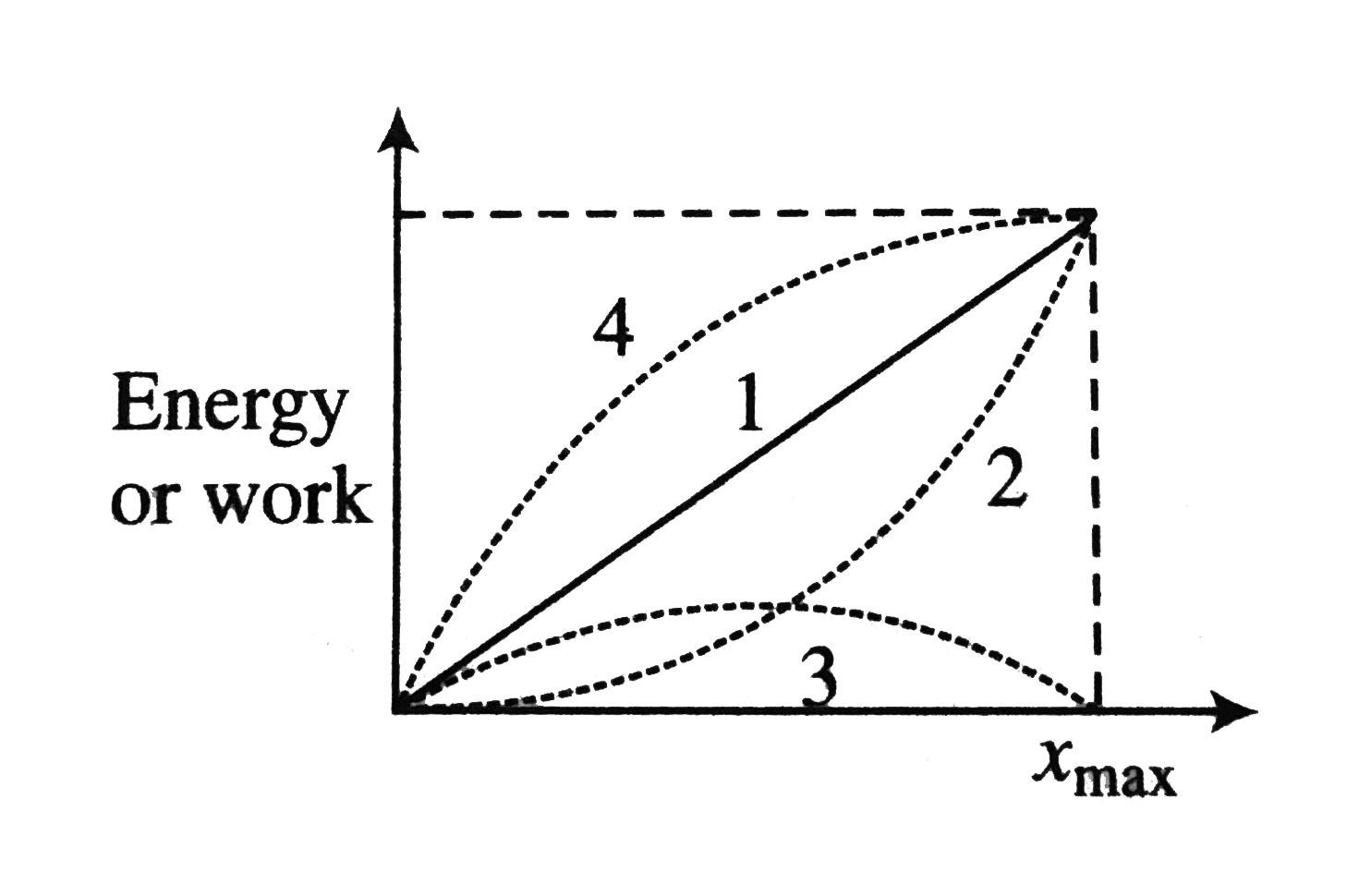A srping lies along the x-axis attached to a wall at one end and a block at the other end. The block rests on a friction less surface at `x=0`. A force of constant magnitude F is applied to the block that begins to compress the spring, until the block comes to a maximum displacement `x_(max)`.

During the first half of the motion, applied force transfers more energy to the
A. (a) Kinetic energy
B. (b) Potential energy
C. (c) Equal to both
D. (d) Depends upon mass of the block

During the first half of the motion, applied force transfers more energy to the
A. (a) Kinetic energy
B. (b) Potential energy
C. (c) Equal to both
D. (d) Depends upon mass of the block

Correct Answer – C
From beginning to end of motion: `DeltaKE=0`
`x=(2F)/(K)` (from work-energy theorem)
First half corresponds to `0lexle(F/K)` Work done by force during first half:
`W_1=Fx/2=F^2/K`
Energy in spring `U_1=1/2K(x/2)^2=(F^2)/(2K)`